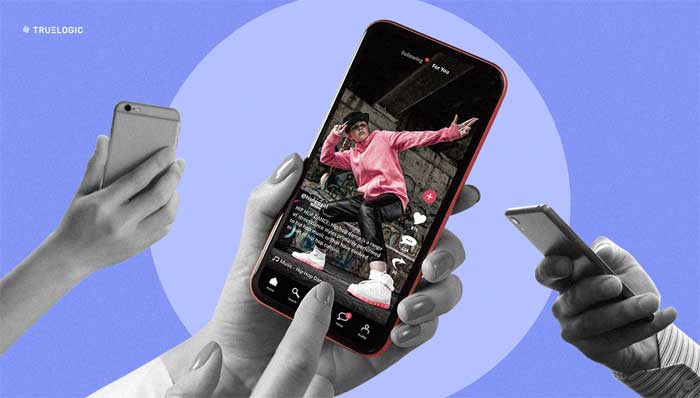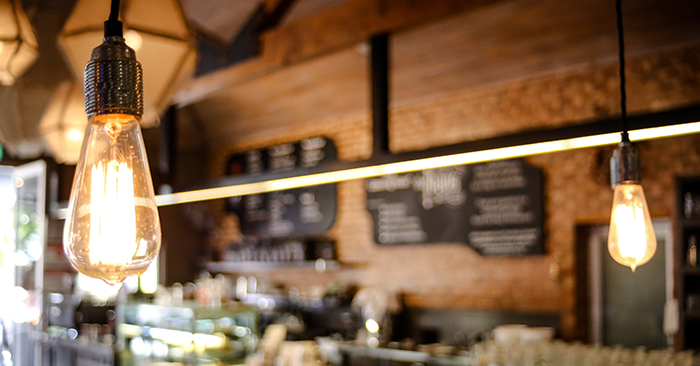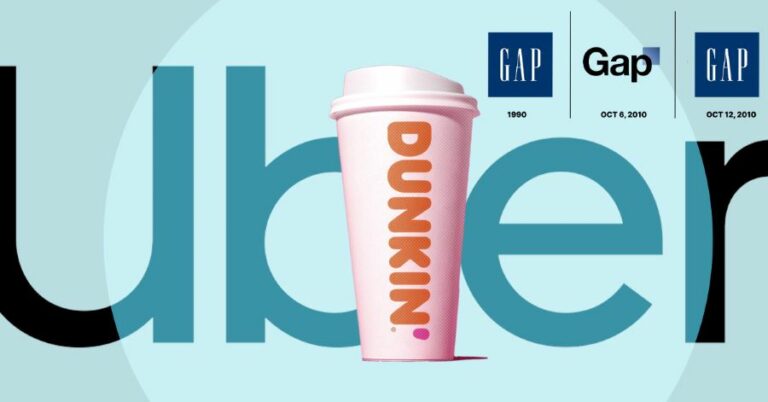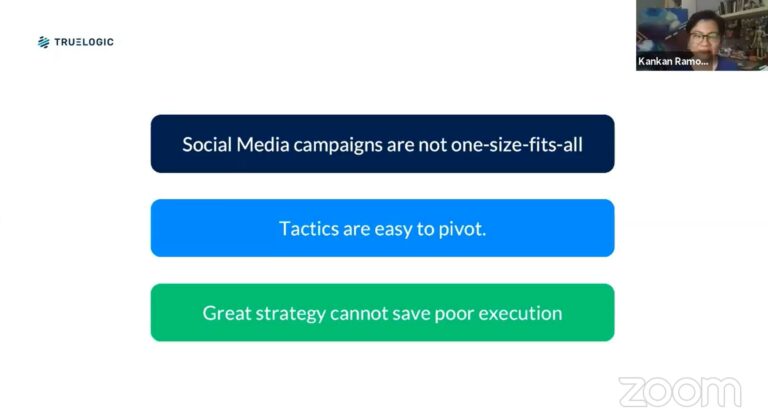Truelogic Episode 95 Recap: How People Respond to Social Media Ads

Podcast Transcription
Berns San Juan: Hi, and welcome to another episode of the Truelogic DX podcast. This is a winner and losers episode. And today we’re going to be talking about social media ad behavior, like how audiences of specific industries behave, engage, and convert based on what industry they’re in. And we wanted to bring this conversation to you because, over several years, I think, you know, we’ve already talked about how we run hundreds and hundreds of campaigns.
But I think what most people don’t know is that we specialize in specific industries. For example, Truelogic has somewhat of a specialty dealing in healthcare, jobs and employment, education, B2B services, real estate, banking, finance, and insurance. And so what that allows us to do is collect tremendous amounts of data over years and years and years in terms of how audiences behave across these industries.
Now, it’s too much to talk about the healthcare audience, the banking audience, and the insurance audience as a whole, because people behave differently when it comes to how they behave against Google Ads, social media ads, organic search, site content, and so on. We thought we’d limit the conversation in this episode specifically to how people respond to social media ad behavior. And so welcome to winners and losers, social media ad behaviors by industry.
Paid Social Media Trends in Asia
So there was an interesting Meltwater report, they found that 40% of Asia Pacific companies see paid social playing a more and more important role in the coming year, 2024. And 63% say that Facebook is the channel that they use most frequently for paid ads, followed by Instagram and then LinkedIn and then YouTube, and then TikTok. And then again, you might say, what? No Google ads. And again, you know, because we’re limiting this conversation specifically to social media. But as with any industry, there are winners and losers when it comes to social media advertising. Who’s riding the wave of success? Who’s struggling to stay afloat in terms of ad costs and engagement?
Industries with the Most Expensive Social Media Ad Cost Per Click in the Philippines

The first topic that I’d like to talk about is the cost of acquiring their attention, the cost of acquiring a visitor. And so this is industries, winners and losers in the industry in terms of cost per click, right? Like, so the first one that I’ll talk about is the industries with the most expensive costs per click in the Philippines.
1. B2B Services- P173.41
Now based on our 2023 benchmark, and it should be no surprise, one of the most expensive sectors often involves high-value transactions because there are a lot of providers, a lot of them are becoming digitally savvy, and therefore businesses targeting other businesses, again just simply because of the size of the contract value, has driven a lot of competition in this area.
This heightened competition, especially one that’s ramped up over the years, drives up the cost per click or the cost to acquire eyeballs, the cost to acquire audiences because ad placements have been increasingly becoming more and more aggressive. In the Philippines, if I were to average our, against our benchmarks, right, like everybody that we service in the B2B space, the average cost per click, the average cost of acquisition is about P173.41. That’s pretty expensive, I would say, like, especially in the Philippine setting, right? However, the average cost per click against a social media ad is about P173.
2. Real Estate- P77.13
Again, understandable because real estate is, a high-value transaction, right? Like you’re easily talking in the millions for every actual conversion. And so because of the high value of the customer, even though there is a low propensity for lifetime value or a low propensity for repeat purchase, just the sheer transaction value makes it expensive. Real estate sort of clocks in at P77. So these rates are benchmarked against all campaigns we run on real estate across 2023.
Industries with the Cheapest Social Media Ad Cost Per Click in the Philippines
Who is on the winning end? If these are the two industries where it is the most expensive in terms of cost per click, who is the cheapest?
1. Industrial Services- P4.48
The people that have the cheapest cost to acquire eyeballs are a. industrial services. I think so, with a grain of salt, partially because I think the industrial services, unlike real estate and B2B, have not become emotionally mature. And so the competition is not as fierce. But internationally, $2.48 is the average benchmark globally for B2B services. So industrial services are still super cheap and what that tells us is that the industrial services in the Philippines are not highly competitive.
Remember that in terms of digital media buys, it’s a bidding war. And so the more people bid for an audience, the more people bid for customers, the more expensive that audience group becomes. And so what this tells us is in industrial services, nobody is ramping up the bidding war. Everybody is just incidentally digital. Nobody is deliberately digital.
2. Jobs and education- P4.83
Jobs and education tend to be pretty cheap, but take note, jobs, and education are not one industry, they’re separate industries, but they just both clock in at P4.83. These are like in our, against our benchmarks, these are clocking in at less than five pesos a click, which is amazing, right? Like we serve this, a few universities. You would think that this would be more expensive, but it’s not. By the way, the global benchmark is over a hundred pesos. It’s about P120 globally.
Like if you did this in the US, in Europe, in Australia, in Singapore, in Hong Kong, you would probably clock in at about two dollars per click. But in the Philippine setting, the average cost per click against Truelogic’s benchmarks only amounts to less than five pesos. And again, I’ll differentiate between jobs and education, like later.
3. Healthcare- P5.46
Another one that was a bit of a surprise is healthcare. Granted, not the most expensive industry, even internationally, right? Like internationally, healthcare benchmarks at about $1.32. The healthcare sector targets specific audiences requiring medical services, information, and solutions to health-related issues. And they’ve got a relatively narrow audience, right?
It’s either the people who are afflicted with an illness or the loved ones of those people who care for them. What this tells you is on the healthcare front, the competition is not as mature. Right? And so these benchmarks, these cost-per-click benchmarks are more representative of, I would say, the digital maturity of that vertical more than it is representative of the audience size of that vertical.
4. Finance and Insurance- P9.03
Another thing to note, this one’s not part of our winners-losers list, they’re sort of in the middle, but the finance and insurance benchmarks in the Philippines are still pretty low. The average cost per click in the Philippines is P10 or less. If you’re doing better than P10, you’re doing great. But international benchmarks are almost $4 for the finance and insurance sectors.So there’s a drastic difference between the international benchmark and the local performance or the local benchmarks. So that’s the portion that talks about cost per click.
Industries with the Highest Engagement in Social Media Ads in the Philippines
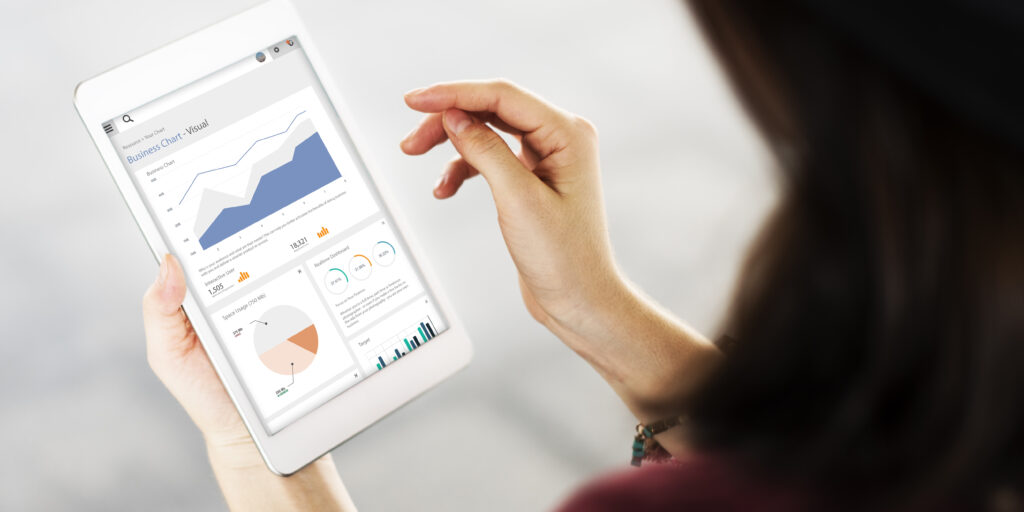
So earlier we were talking about how much to get action out of these guys. Now we’re talking about how much to get a reaction out of these guys. Like how do you get them to like, share, and follow the content that you create? And I’m going to go with the winners first. These are the verticals with the highest engagement.
1. Jobs and Education- 49%
In the Philippines, the benchmark is about 49%. Like that’s pretty high, right? Either the ads are terrific, or the job market is just really responsive to this kind of content. So that’s terrific.
2. Real Estate- 43.33%
Whether you know it’s… whether it’s the American dream, the Filipino dream, or whatnot, real estate is on everybody’s aspiration list. The real estate engagement rate, at least against the campaign Truelogic has run in the Philippines, is about 43.33%. That’s immensely high. If I’m not mistaken, I think 2023 was also a record-breaker for us in terms of overall engagement rates for real estate. But against our benchmarks, the real estate audience is about 40% engaged with the content that you create, which is terrific. By the way, international benchmarks against real estate engagement, like engagement against real estate ads, are less than 1%. It’s about 0.98% to be precise. So as far as social audiences go, Filipinos are very responsive.
3. Industrial Services- 32.31%
Now one of the earlier winners we have, and sort of like a consolation prize winner, when it comes to engagement rates industrial services, which I find weird. Which I find weird, internationally, they engage at about 0.9%. 0.89% is where they engage at. But in the Philippines, the engagement rate hovers at about 30% give or take two points against the industrial services. And so these are practical solutions.
Industrial services are the ones that cater to businesses and professionals. These are people seeking practical solutions for operational requirements, and administrative requirements. And so most of the ads that you guys will see put a heavy emphasis on efficiency, practicality, and cost-effectiveness, and those are the ones that drive the engagement. Usually, you don’t expect industrial services and B2B to be fairly high. But in the Philippines, again, we’re a very social audience. 10.25 hours online over 4.25 hours on social media channels. It’s no wonder that our engagement rates are through the roof compared to global benchmarks.
Industries with the Lowest Engagement in Social Media Ads in the Philippines
Now, let’s talk about the industries with the lowest engagement.
1. Employment/Job -0.06%
When it comes to low engagement, remember how we said that the lowest cost per click is the job sector, right? Low engagement also tends to pervade the job sector, the employment sector. There is significantly limited interest when it comes to, like it’s hard to get job posts to get engagement, right? Like, and I think in the Philippines, it’s just because there’s so much of it.
I mean, just drive through EDSA, right? You get inundated with BPO ads that they’re hiring or where you can grow your career or whatnot. There are multiple channels for job placements in the Philippines. You’ve got ones that are technologically inclined like Kalibrr, but then you’ve got the more traditional ones that are like Headhunters, right? And all of these guys produce content.
But there’s just so much content out there that users tend to be, you know, employment audiences tend to be very passive towards them. They don’t get a lot of reaction. This is one where the international benchmark beats the Philippines. Internationally, job ads get about a 0.47% engagement rate. In the Philippines, it’s a rock bottom 0.06% engagement rate. So that’s pretty low.
2. Healthcare- 1.87%
Now, remember how I said there is a gold mine in healthcare when it comes to cost per click? Because our cost per click in healthcare is about, you know, six pesos or less in terms of cost per click. But in terms of engagement, it is pretty low. It’s about 1.8%. That’s a full percentage point higher than the international benchmark, which is just 0.8%. But healthcare advertising is anywhere from hospitals running ads to private healthcare providers running ads to medical devices running ads. All of these belong to the healthcare sector. And against our benchmarks, the engagement rate for social media ad content against these guys is about 1.87.
Industries with the Highest Click-Through Rates in Social Media Ads in the Philippines

Now, if we talk about cost per click and we talked about engagement, let’s talk about click-through rates. This is the user taking an action to go to your… like they’re taking their social interaction and they’re moving it to your website, or they’re taking their social interaction and they’re taking it to your converting pages inside your social media channels.
1. Finance and Insurance- 2.6%
They’re pretty cost-effective in the Philippines, like significantly more expensive internationally, and they click through. Right? Most of these audiences are willing to be sold or marketed to. They’re willing to look at your content. They’re edgy. These are audiences that are looking to educate themselves.
And so you’re talking about finance instruments, e-wallets, insurance products, and so forth. They clock in at about 2.6% CTR or click-through rate. Again, not 2.6 cents, right? Like not two pesos and 60 cents, 2.6% click-through rate. That means 2.6 people out of every 100 are going to click through to your website or your conversion page inside your social media page.
2. Industrial Service- 2.55%
Industrial services, pretty high. Not a surprise. The tendency is B2B services in the Philippines, I think when they’re B2B, they tend to click through better. You don’t get a whopping amount of audience, right? You don’t get millions and millions of ad views. You don’t get hundreds of thousands of engagements, but you do get them to click through to your website, right? And so industrial services are at about 2.55, so a close second to finance and insurance. Healthcare winds up with the consolation prize at about 1.27%.
Industries with the Lowest Click-Through Rates in Social Media Ads in the Philippines
Now, where are people least responsive? Let’s take a look at industries with low CTR in social media ads.
1. Job/Education- 0.91%
So in the same way that job seekers are not very responsive like they don’t immediately go to web pages and whatnot, I guess it’s because they leave their resume on LinkedIn and they leave their resume on JobStreet and so on or they publish it on Indeed and whatnot, they’re expecting for the interview schedules to come in. But they’re not very active when it comes to looking for more information. The click-through rate on ads is about 0.91%. That’s not tremendous. That’s not very bad. Right? Like that’s not too bad, but it’s 0.91%. Employment or job training is about 0.74% and then followed by real estate whose CTR is about 0.61.
2. B2B Services- 0.38%
You know, sadly for me, you know, the loser in terms of lowest CTR is B2B services, which we fall under, Truelogic falls under B2B services, which sort of makes sense because you’re trying to drive quality versus quantity, right? Like even if you look at the traffic of a website like ours and people that fall in our industry, you’ll notice that their traffic spikes begin Monday late afternoon and then peter off as early as Friday morning.
And then it’s a lull on weekends, right? Like if I see traffic on our website on weekends, I’m assuming it’s my employees looking at our website. Like that’s all there is to it. Because we do B2B services, people tend to educate themselves about our products and our services on the hours they’re paid, right? And so that sort of makes sense that it is the loser when it comes to CTR.
International Benchmarks for Facebook Ads
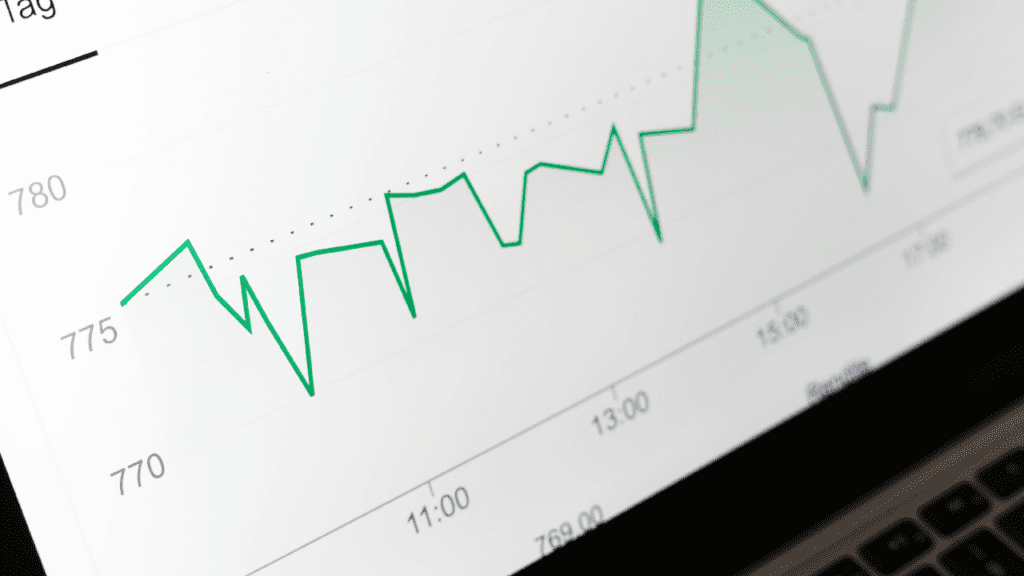
Now, just to give you guys a couple of benchmarks internationally, right? And these are benchmarks that WordStream has for Facebook ads because most of the costs I’ve been talking about are advertising on Facebook. In terms of cost, the highest one is finance and insurance internationally, not in the Philippines. In the Philippines, pretty cost effective. But internationally, finance and insurance are at about $3.80 a click.
For consumer services, it’s about $3. For internet and telco, it’s about $3. For home and garden, it’s about $2.70. For employment, it’s about $2.70. For industrial services, about $2.50. B2B is about $2.50. Auto is about $2.25. Jobs is about $2.10. Fitness is about a dollar eighty. Beauty is about a dollar, eighty. Real estate is about a dollar, eighty.
So what you can gather from the list that I’m giving you is that in order of cost, the Philippine market behaves drastically differently to the international market just because most of the international or most of the western markets are already very mature when it comes to digitizing their marketing. And in the Philippines, I would say we’ve been coming into maturity since COVID, right?
Slowly but surely our numbers will rise to these levels. But the takeaway from this section of the conversation is if your industry costs are nowhere near the international benchmarks, you still have it good, right? And so you should be channeling, you should be doing more digital advertising now while the going is good.
Now, let’s talk about engagement, like which verticals tend to generate the most engagements. Interestingly enough, right, like I notice how engagement rates in the Philippines are in the double digits, right? But internationally, most engagement rates are in single digits. But it might not surprise you to know that the most engaging ad content relates to pets, right? And I can relate. I’m not a Shorts TikTok viewer, but, you know, I see a video, I see a dog video, I’m clicking. And so these are very engaged users.
In the Philippines, legal is not a big digital industry, but internationally, there are very engaged audiences. Like, so these are people that are dealing with their DUIs, divorces, and so on. And the Philippines is not a very litigious country. And so the engagement rates for legal content in the Philippines are not going to be very high. If anything, the only legal content that tends to be very high in the Philippines are labor-related topics, which fall under legal. Retail has pretty good engagement, right? It’s about 1.6 internationally. Apparel is about 1.25 internationally, and so on.
Social Media Ad Behavior: Implications for Businesses
In this last section, I’m going to talk about a vertical, and then I’ll summarize, you know, is it easy to acquire an audience? Is it easy to engage them? Is it easy to convert them? Right? So, this is the practical application of this conversation.
1. Real Estate
Acquisition is expensive. Real estate audiences are expensive. Engagement is easy. They are very highly engaged in the double digits in the Philippines. The real estate industry is the second most engaged industry locally. Right? Like, and so that’s a big deal. So yes, you’re going to have to spend a lot to attract somebody’s attention, but it’s not too hard to keep somebody’s attention.
However, because of the size of the transaction, conversion is hard. Conversion is hard. Their click-through rate and their conversion rates are not through the roof. Right? So if you’re in real estate and you want to do social media ads, are you ready to accept that acquisition will be hard, engagement will be high, and conversion will be difficult. And so that’s for you guys in real estate.
2. Industrial and Commercial Services
Acquisition is easy. In the Philippines it is easy. Everywhere else, hard. Everywhere else, expensive. But in the Philippines, acquiring attention is easy. Not the most engaged users because let’s face it, commercial services, and industrial services, are not the sexiest things, right?
And so if you’re in the industrial and commercial services sector, you have to accept the fact that you’re not talking to the most engaged audiences. However, the ones you successfully manage to engage are easy to convert. Conversion rates are pretty high. CTRs are pretty high.
3. Education
I’m not sure if you guys know, but the Philippines is a very education-centric society, almost half the national budget goes to education. And so it should be no surprise that a. audience acquisition is easy. B. Audience engagement is easy. C. Audience conversion is easy. This is by far, like one of the best-kept secrets that we have, boop, cats out of the bag.
But this is one of the best-kept secrets that we have acquiring, engaging, and converting the education audience, potential students, which is, you know, about half the population, is easy for the education industry and that’s because the digital transformation in the education sector is so poor. So if you are in the education space, and you want to be competitive, now might be the chance for you to jump in. It might be the perfect time.
4. Healthcare
Acquisition is easy. Not a very mature audience to compete against. The cost per click is low. Like single peso digits, not even double peso digits. Considering that the transaction values tend to be high and the stakes tend to be high, the acquisition is really easy. Engagement. If I worked in a hospital that was doing social media ads, I would not set likes as my metric. Engagement is low, right? Like, because I mean, think about it. You’re talking about breast cancer, cervical cancer, arthritis, diseases, diabetes, comorbidities, heart disease, stuff that’s related to aging.
People are not, you’re not going to talk about diabetes and people are going to go like… right? So be prepared for low engagement. That’s not the measure of your, that’s not the measure of your metric. Acquisition is easy and conversion is easy in the healthcare sector in the Philippines. It’s not mature yet. And so if you were in the healthcare sector and you’re listening to this podcast, now’s your time to shine.
5. Finance and Insurance
This one has been ramping up. And so I would label its acquisition as moderate. There are… more and more of the competition is becoming very digitally savvy. Like, let’s say FinTech is a subsection of this group. All of them are technology-based, they’re all very digitally savvy. And then let’s take the insurance companies like Sun Life, like Pru, like InLife, and so on.
Some of these guys have been doing digital for about half a decade now. So, you know, they’re no slouches. So, acquisition will be moderate, engagement will be moderate. Don’t expect the easiest acquisition of promoters in this vertical. However, conversion is still relatively high, right? And when I say relatively high, it means relatively high like good ROI and relatively high compared to global benchmarks.
6. Employment/Job
And then of course, if you’re in the employment sector, if you’re a job board and whatnot, audience acquisition, is expensive. Everybody’s good at this. Everybody is good at optimizing for job posts and vacancies now. Engagement is low because you are going to be one content out of a thousand pieces of content your audience will see and conversion is going to be hard. So if I were you, I would evaluate, like this is one of those examples where you have to employ a more mature digital strategy than you would in any other industry. This would be one of the most difficult industries to work in.
7. B2B Services
Now last but not least, my own vertical B2B. Acquisition is hard, engagement is hard, or engagement is moderate, I’d say actually, but conversion is hard. However, the value of the transaction makes it so worth it. Almost 90% of Truelogic’s clients are achieved through marketing. We have a pretty healthy referral volume, but a majority are acquired through digital marketing. It’s actually acquiring digital audiences, engaging those users, and then converting them on the website. Yes, it’s hard, but it’s so worth it.
With that, I’m hoping that you fell under one of the seven or so odd verticals that we talked about and that you took away something from this. If you have any other topics that you’d like to talk about, and this will not be the last in our winners and losers series, but if you’ve got other ideas that you want to talk about, if there are topics or there are people that you want us to include in the conversation, let us know.
We’re on Facebook, LinkedIn, and YouTube, and check out our website for other resources that you might have missed in the past. I wanna thank our marketing team and our friends at Podmachine for making these podcast episodes possible. And I will see you in the next episode. Thank you for joining me. Cheers.

